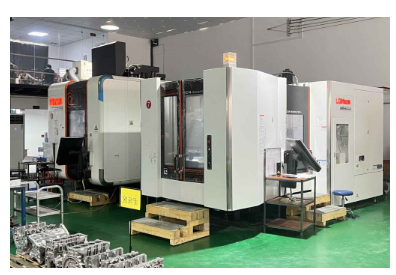Efficient and effective auto parts prototyping is the linchpin for any automotive industry in order to develop new vehicles and improve existing models. This critical phase of automotive component development enables engineers to investigate part design alternatives, their operational capabilities, as well as guarantee that parts can pass exacting standards before full scale production.
Reducing Development Time
When it comes to making new auto parts, prototyping is one of the keys to faster development times. Historically, the process of bringing a new automotive component to market-going from idea to full production-could extend for years. There are advanced prototyping technologies such like 3D printing and CNC machining that can shorten the time required to produce and test a part. By printing large volumes in a short amount of time, 3D printing technologies make a prototype that may have taken weeks to manufacture using a traditional method can now be printed in a matter of hours or days.
That speed is essential not just in getting to market ahead of competitors, but also in being able to respond to market requirements and regulatory changes sooner. Rapid prototyping means that manufacturers can iterate designs quickly, in response to real-world testing and feedback, ensuring that the final product is both high quality and market-ready.
Improving Design Precision and Susceptibility
This has become a key factor in improving the accuracy and adaptability of automotive parts design with the new ways of prototyping. Auto parts prototyping allows engineers to test different materials and shapes to see which combination provides the best performance. In the same vein, detailed simulation in conjunction with physical prototype testing is used to optimize aerodynamics, durability, and functionality in parts like bumpers, engines and suspension components.
For instance, crash test simulations of prototypes can offer important insights into how certain components perform under rigorous conditions that allows for changes in the design to enhance vehicle safety. Testing complex part geometries that would be difficult or impossible to manufacture using traditional means / A degree of design flexibility beyond what was achievable before

Cost Reduction in Development
The importance of money to the development of automotive parts cannot be overstated. Having the ability to make rapid prototypes helps a lot in managing the costs thereofUsingEncoding:NSUTF8... The earlier in the product development cycle that design flaws can be found, the cheaper that part becomes because the high cost of finding the same flaw during full-scale production can be crippling to companies. Approximately 10 times less expensive to fix in the development phase than after production.
As a bonus, utilizing prototyping tools can save the cost of producing numerous physical prototypes. Additionally, sophisticated digital prototyping and weld virtual testing can spare the majority of physical prototypes, saving material and labor expenses.
Catalyzing Innovation
Prototypes are not just a means of testing and validation; it in fact is a propulsion for innovation. Modern prototyping techniques put design and engineering through a rapid feedback loop - a synthesis that comfortably accommodates new, innovative ideas and technologies. The fact that you can work with an open source community means that new and innovative materials and designs can be created that will greatly increase the performance and sustainability of automotive components.
New lightweight composite materials are a case in point: Their incorporation into prototypes yields production parts that enhance fuel economy and cut emissions, all without any loss of strength or safety.
Meeting Regulatory Compliance
Last but not least, Prototyping also helps manufacturers to comply with complex regulatory requirements. Testing potentials in the real world realm is crucial to ensure future make a spectacular new addition gives a nod to global rules and environmental norms before mass production. This initiative not only helps in preempting expensive recalls, but also strengthens the brand-s public trust.
Therefore, it is indispensable that auto parts prototyping be carried out in the automotive development process because it harnesses innovations that deliver the safest, most fuel-efficient vehicles. Over time, prototyping will be playing a larger role in the product development cycle and industry competitiveness as technology progresses, rewriting the way manufacturers approach designing and launching new auto parts.